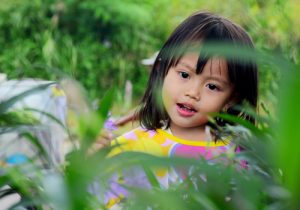Supporting Bilingual Children in the Early Years by Rebecca Payne
24th October 2017
Share this entry:

Encourage parents to speak in the language most comfortable to them at home. Many parents can worry about effecting the development of the second language if they don’t communicate with the child in this language, however by immersing the children in a language rich early years environment the child will pick up both languages with relative ease.
Identify and learn some key phrases in the child’s first language such as wanting the toilet, or being hungry. Ask the parents to check your pronunciation of these phrases. This can allow the child to communicate with you, even if they are struggling to communicate their needs in English. You should also encourage the child to communicate in both languages. This allows the child to generalise speaking in both languages as opposed to associating each language with individual settings.
Allow the child to settle and communicate in their own time; this can often take a few weeks. Encourage the child to communicate and respond with enthusiasm and interest when they do speak to you, regardless of language. Use a picture timetable to keep all the children informed about the daily routine, regardless of language. Speak clearly and slowly so that children can pick up on the individual sounds within words more easily.
Share songs and books in both languages. And encourage the parents to do this at home too. This exposes all children to multiple languages and can encourage bilingualism in all children, regardless of languages in the home environment. An example of this might be to sing a good morning song with a verse in every language within the setting. This encourages inclusion, and can make the child happy knowing that there home language has been included in the daily routine. Ask parents to help with this, by sending home the verse in English and asking them to translate to their home language, but don’t forget to check pronunciation again.
The most important thing to do when working with children learning a second language is to not discourage the use of either language. Encouraging speech in both languages, allows the child to become fluent in both and not feel like communicating in one language is better than the other.
Why attend Childcare Expo?
Join over 2,500 like-minded individuals from the early years sector who are dedicated to improving both practice and their childcare settings.
Attend educational seminars to credit your CPD
Meet the experts to have your questions answered
Receive fantastic onsite offers and discounts
Experience expert-led informative hands-on workshops
Network with peers and industry players
Pick up hundreds of new product ideas and services
And most of all, enjoy a great day out with your colleagues




